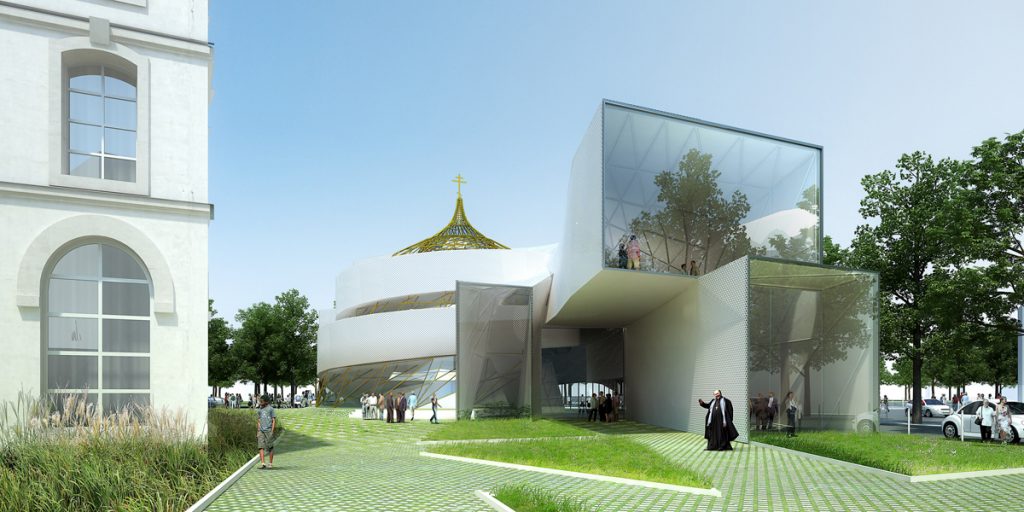2011
Russian Orthodox Center
Invited competition
Russian federation
Size 5.175 m² / 15 M€h
Churches are signs of human history in the City. How can we reinvent their place in atheist society? The church is important in the same way as the theater. The theater remains important as an institution in the city, even for the citizens who never attend the theater. How the issue of developing places of worship for minority faiths is dealt with, is often an indicator of the degree of pluralism present in a city: “ … it is the communal recognition of the legitimacy of everyone ‘to be there’ that makes urban life possible, from individual neighborhood units to the city as a whole.” (Yves Grafmeyer) Today the church is useful for believers. However, we propose to build a church for non-believers, as we have no need to build churches for believers. For non-believers, the church can constitute a sign of pause in the interior of the city. “It is the sign of an imaginary place, where ideas and representations of these ideas are concentrated, a concentration the citizen needs, even if he doesn’t go there.” Our building makes advantageous reference to the place in which it stands rather than to the traditional form of a religious building. For this reason the church is positioned with a cultural building surrounding it.
AZC architects



